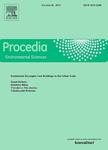版权所有:内蒙古大学图书馆 技术提供:维普资讯• 智图
内蒙古自治区呼和浩特市赛罕区大学西街235号 邮编: 010021

作者机构:Chinese Research Academy of Environmental Sciences Beijing100012China State Environment Protection key Laboratory of Regional Eco-process and Function Assessment Beijing 100012 China State Key Laboratory of Environmental Criteria and Risk Assessment Chinese Research Academy of Environmental Sciences Beijing 100012 China College of Water Sciences Beijing Normal University Beijing 100875 China
出 版 物:《Procedia Environmental Sciences》
年 卷 期:2012年第13卷
页 面:324-330页
主 题:Phragmites australis carbon storage and fixation Baiyangdian
摘 要:Wetland ecosystem occupies an important position in the global carbon cycle with a strong ability of carbon storage and fixation. On the basis of field investigation and laboratory measurement, in the paper, the standing biomass and primary production of wetland Phragmites australis in Baiyangdian were study, and its ability of carbon storage and fixation in accordance with the principle of photosynthesis was measured, and then the potential ability of carbon storage from the perspective of efficiency for solar energy utilization was discussed. The results show that carbon storage of wetland Phragmites australis is large in Baiyangdian with 5.81 kg • m -2 , 7.14 kg • m -2 and 8.72 kg • m -2 respectively; carbon fixation is also very large with 2.54 kg • m -2 , 3.12 kg • m -2 and 3.81 kg • m -2 respectively. In addition, the underground biomass is larger than the aboveground biomass, and the ratio of the two is 2.38-3.30 with the average of 2.90. The underground carbon storage is nearly 3 times as much as the aboveground carbon storage. Wetland Phragmites australis in Baiyangdian has a strong ability of carbon fixation with 1.17 kg • m -2 • a -1 , 1.49 kg • m -2 • a-1 and 1.76 kg • m -2 • a-1 respectively, which is 1.7-3.4 times as much as the average ability of carbon fixation of the national terrestrial plants and 2.0- 4.0 times of that of the global plants.